Yanqing Temple: A Must-Visit Destination for Culture Lovers and Nature Enthusiasts
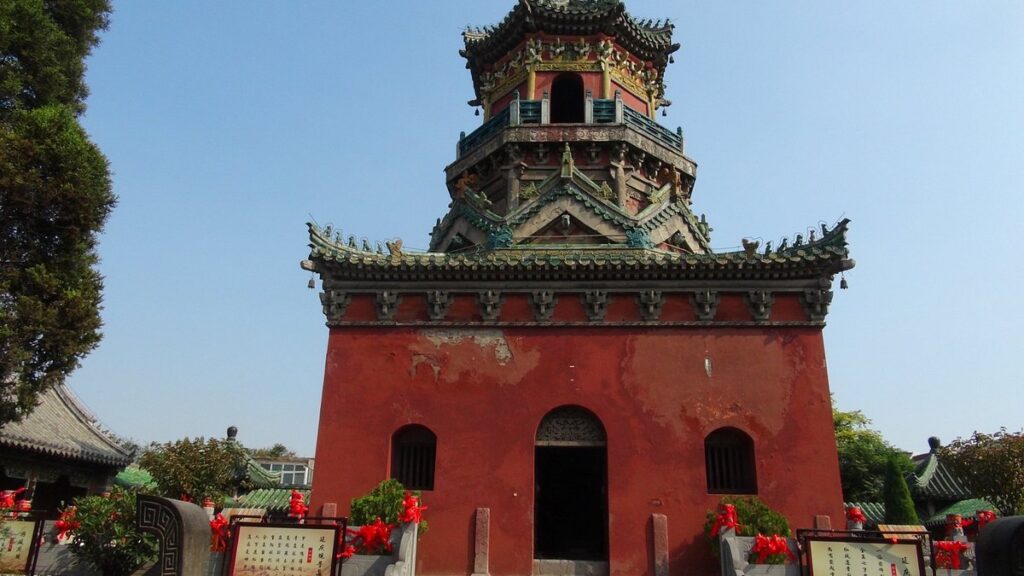
An Essential Guide to Visiting Yanqing Temple
In This Guide
- An Essential Guide to Visiting Yanqing Temple
- The Rich History and Legends of Yanqing Temple
- Main Highlights: What You Absolutely Can’t Miss
- Planning Your Visit: A Practical Guide
- Tickets: Prices, Booking, and Tips
- How to Get There: A Complete Transportation Guide
- Local Cuisine and Accommodation Nearby
- Frequently Asked Questions
- Final Thoughts on Your Trip
Nestled in the heart of Kaifeng, the Yanqing Temple (延庆寺) stands as a testament to the rich tapestry of Chinese history and culture. This Taoist temple, renowned for its stunning architectural features and serene ambiance, offers visitors a unique glimpse into the spiritual and artistic traditions that have flourished in China for centuries.
As you approach the temple, you’ll be greeted by its distinctive turquoise-colored tower, a harmonious blend of Mongolian and Chinese architectural styles. This octagonal pavilion atop a square base is not only a striking visual centerpiece but also a symbol of the temple’s storied past, dating back to the Yuan Dynasty.
Visitors can expect to immerse themselves in the tranquil surroundings, where the intricate wood carvings, vibrant murals, and the scent of incense create an atmosphere of reflection and peace. Whether you’re a history enthusiast, a culture buff, or simply seeking a moment of calm away from the bustling city, Yanqing Temple provides an inviting sanctuary.
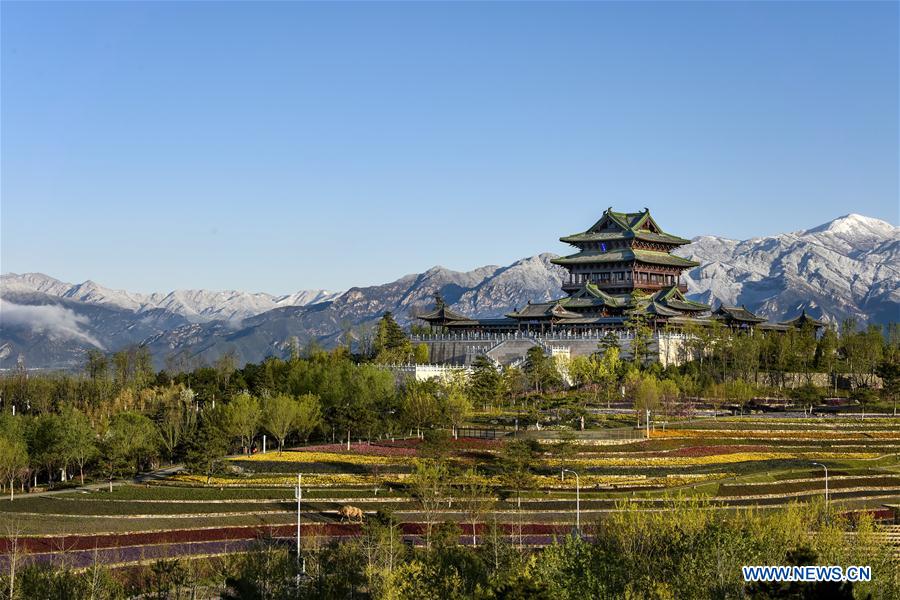
Yanqing Temple.
Key Highlights:
– Unique Architecture: Marvel at the temple’s unusual pagoda, which features a square base and an octagonal upper level, a rare combination that reflects the temple’s hybrid cultural influences.
– Cultural Insights: Engage with knowledgeable guides who can provide fascinating insights into the temple’s history, architecture, and significance in Taoist practice.
– Photographic Opportunities: With its picturesque grounds and photogenic structures, Yanqing Temple is a paradise for photographers looking to capture the essence of traditional Chinese architecture.
As you plan your visit to this lesser-known gem, prepare to step back in time and experience the spiritual serenity that has drawn pilgrims and tourists alike to this remarkable site for centuries.
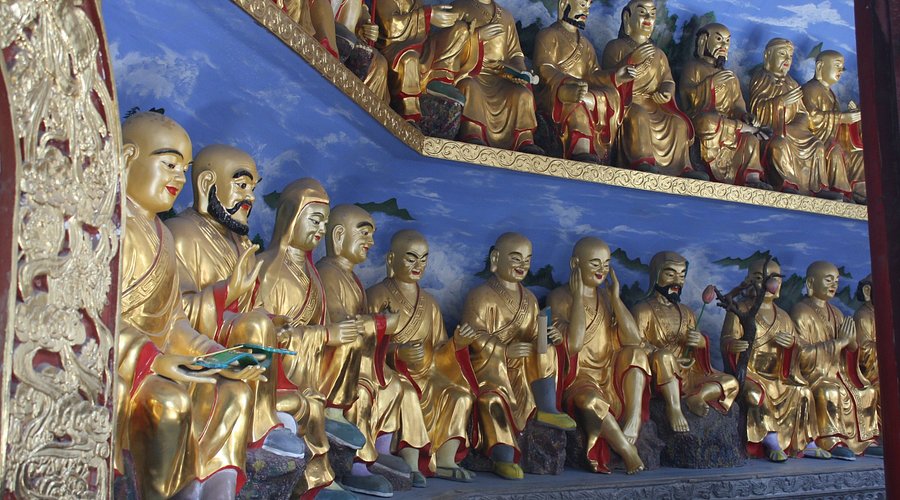
Yanqing Temple.
The Rich History and Legends of Yanqing Temple
Discovering the Historical Tapestry of Yanqing Temple
Nestled in the heart of Kaifeng, Yanqing Temple (延庆寺) stands as a testament to the rich tapestry of Chinese history and culture. This Taoist temple, with its unique architectural features and serene surroundings, invites visitors to explore not only its physical beauty but also the legends and historical events that have shaped its identity over centuries.
A Glimpse into History
Yanqing Temple dates back to the Yuan Dynasty (1271-1368), a period that marked significant cultural and political shifts in China. Originally established as a place of worship, the temple was dedicated to the Taoist deity, Lord Laozi, who is revered as a symbol of wisdom and longevity. Over the years, the temple has served various purposes—from a center for scholarly pursuits to a refuge for those seeking spiritual enlightenment.
The temple’s architectural elements reflect the intricate blend of Mongolian and Han styles, evident in its square base and octagonal pavilion. This unique structure, particularly the central tower, showcases the artistic influences of the era and remains a focal point for visitors today.
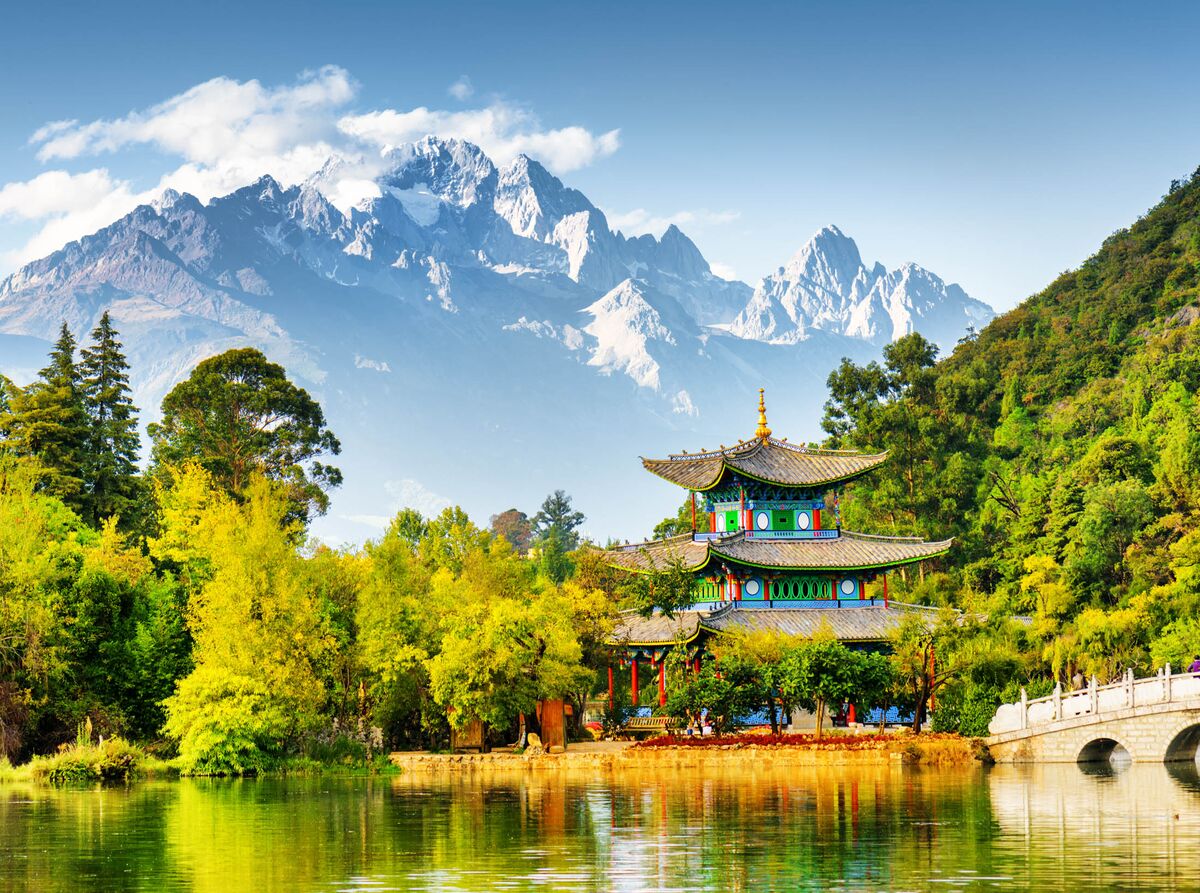
Yanqing Temple.
Legends and Lore
As with many ancient sites in China, Yanqing Temple is steeped in legends that speak to its significance in the spiritual landscape of the region. One popular tale recounts the story of a wandering monk who, after a long journey, sought refuge in the temple. Upon his arrival, he discovered a hidden chamber containing ancient scrolls that detailed the wisdom of Laozi. The monk, inspired by these teachings, dedicated his life to sharing this knowledge, ensuring that the philosophies of Taoism would endure through the ages.
Another enchanting legend involves a celestial event that is said to have occurred at the temple. Locals believe that on certain nights, the spirit of Laozi descends from the heavens, illuminating the temple grounds with an ethereal glow. This phenomenon, often interpreted as a sign of divine favor, draws worshippers and curious travelers alike, eager to witness the miraculous spectacle.
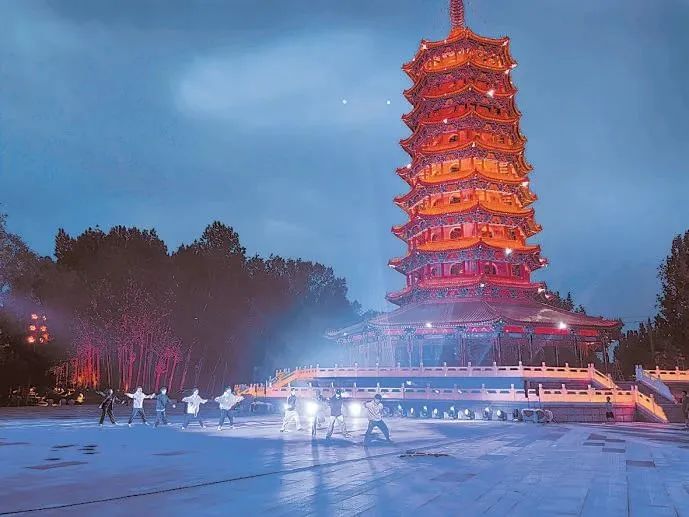
Yanqing Temple.
Architectural Wonders
The temple’s architecture is not only a feast for the eyes but also rich with symbolism. The central tower, adorned with turquoise tiles and dragon motifs, represents the harmony between heaven and earth. Visitors often find themselves captivated by the intricate wood carvings and mural paintings that embellish the temple’s walls, each telling a story of its own.
While the temple may be small compared to other historic sites, its compactness allows for a more intimate experience. Guests can explore the serene gardens that surround the temple, providing a peaceful retreat from the bustling city.
Visiting Today
For international travelers, Yanqing Temple offers a unique window into the spiritual and historical fabric of China. Open daily from 8:00 AM to 6:30 PM, the temple invites visitors to immerse themselves in its tranquil atmosphere. While exploring, consider hiring a local guide who can provide deeper insights into the temple’s legends and history, enhancing your experience.

Yanqing Temple.
Whether you’re captivated by its architectural beauty or intrigued by its rich legends, Yanqing Temple promises an enriching journey through the captivating history of Kaifeng and the Taoist traditions that continue to thrive today.
Main Highlights: What You Absolutely Can’t Miss
Must-See Highlights at Yanqing Temple (延庆寺)
Nestled in the historic heart of Kaifeng, Yanqing Temple (延庆寺) is a captivating destination that offers a unique glimpse into the rich tapestry of Chinese spiritual architecture and culture. Whether you are a history buff, a photography enthusiast, or simply looking for a tranquil retreat, this temple has something special to offer. Here are the highlights you absolutely cannot miss:
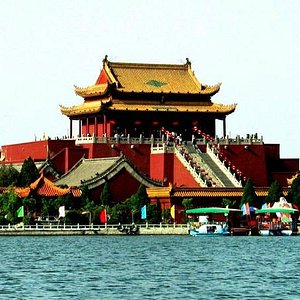
Yanqing Temple.
1. The Uniquely Shaped Pagoda
One of the most striking features of Yanqing Temple is its distinctive central tower. A blend of Mongolian and traditional Chinese architectural styles, this pagoda boasts a square base topped with an octagonal pavilion. Its vibrant turquoise tiling, ornate dragon friezes, and intricate wood carvings make it a photographer’s delight and a must-see for architecture enthusiasts.
2. Serene Grounds for Reflection
The temple is surrounded by beautifully maintained grounds that provide a serene atmosphere perfect for reflection. Visitors often comment on the tranquility of the space, making it an ideal spot to escape the hustle and bustle of the city. Take a leisurely stroll around the gardens, and you may find yourself captivated by the peaceful ambiance.
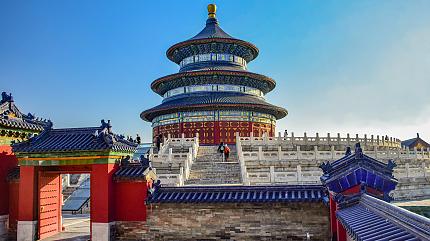
Yanqing Temple.
3. Rich Historical Significance
With a history dating back over 1,500 years, Yanqing Temple is steeped in stories and legends. It has witnessed the ebb and flow of dynastic changes and remains an important site for Taoist practices. Be sure to explore the temple’s history through the various displays and photo exhibits that highlight its evolution over the centuries.
4. Unique Under-Tower Access
Unlike many temples, Yanqing Temple offers a rare opportunity to access the area beneath the central tower. This cellar-like space provides insight into the architectural foundations and the methods used to construct this historical structure. It’s a fascinating experience that adds depth to your visit.
5. Engaging Guided Tours
To truly appreciate the temple’s intricate details and storied past, consider joining a guided tour. Knowledgeable guides can provide context and anecdotes that enrich your understanding of Taoist culture and the temple’s significance. Many visitors recommend this, as it transforms a simple visit into an enlightening experience.
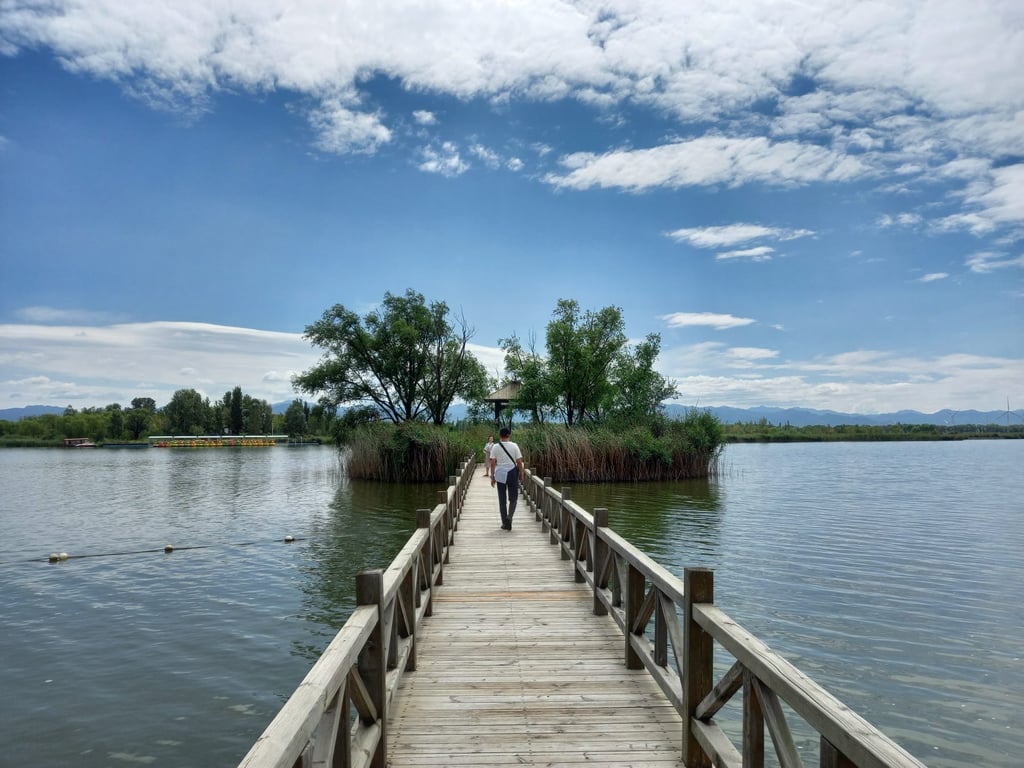
Yanqing Temple.
6. Photography Opportunities
With its colorful decorations, intricate carvings, and the picturesque pagoda, Yanqing Temple is a feast for the eyes. Whether you are an amateur or a professional photographer, you will find countless opportunities to capture stunning images. Early mornings or late afternoons are particularly magical times to visit, as the light casts beautiful shadows and highlights.
7. Friendly Local Community
The welcoming atmosphere of Yanqing Temple is enhanced by the friendly staff and local visitors. Engage with the Taoist priests who are often happy to share their insights and answer questions. Their warmth and hospitality can turn a casual visit into a memorable cultural exchange.
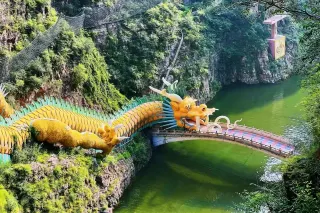
Yanqing Temple.
8. Proximity to Other Attractions
Yanqing Temple is conveniently located near several other cultural and historical sites in Kaifeng, such as the Dragon Pavilion Park and Xiangguo Temple. Plan your visit strategically to explore these nearby attractions, making for a full day of discovery that delves deep into the heritage of this fascinating city.
Conclusion
A visit to Yanqing Temple is more than just a sightseeing outing; it’s an opportunity to immerse yourself in the spiritual and cultural essence of China. From its architectural marvels to its serene environment, every moment spent here is an invitation to connect with the profound history that shapes this beautiful country. Don’t miss out on this unique gem during your travels in Kaifeng!
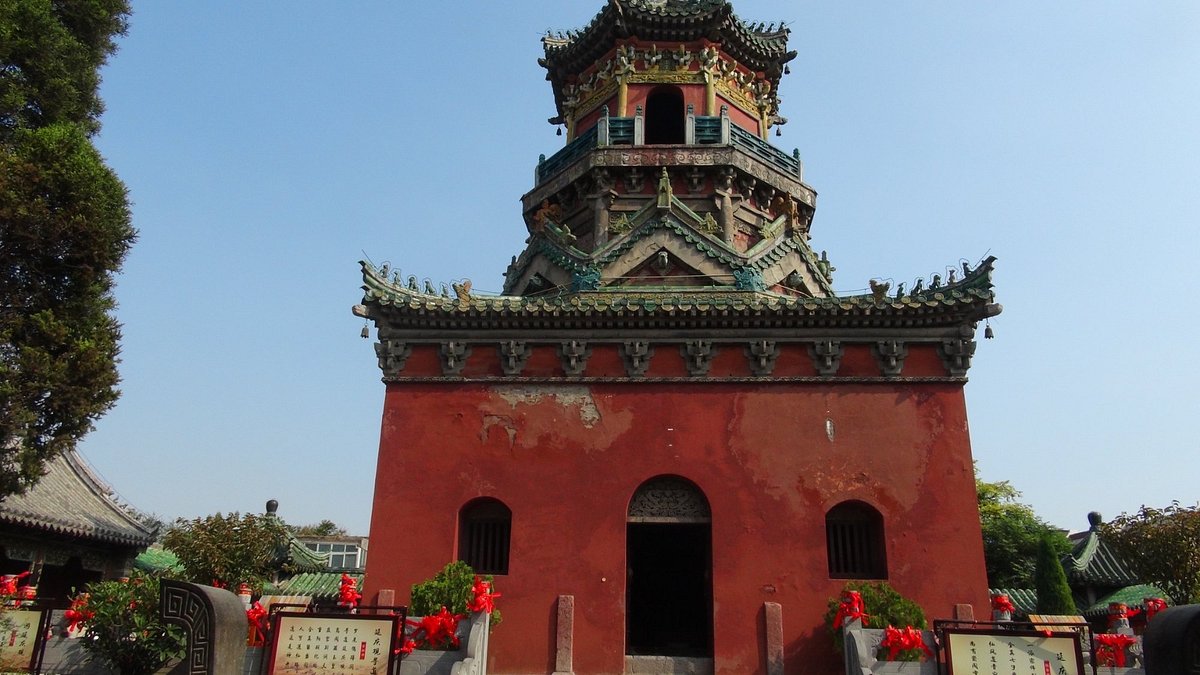
Yanqing Temple.
Planning Your Visit: A Practical Guide
Essential Information for Your Visit to Yanqing Temple
Nestled in the historic Longting District of Kaifeng, Yanqing Temple (延庆寺) offers a captivating glimpse into Chinese Taoist culture. Whether you are a history buff or a casual traveler, this destination is a must-visit for its unique architectural features and serene ambiance. Here’s everything you need to know to make the most of your visit.
Opening Hours
- Daily: 8:00 AM – 6:30 PM
Location
- Address: No. 53 Guanqian Street, Longting District, Kaifeng 475000, China
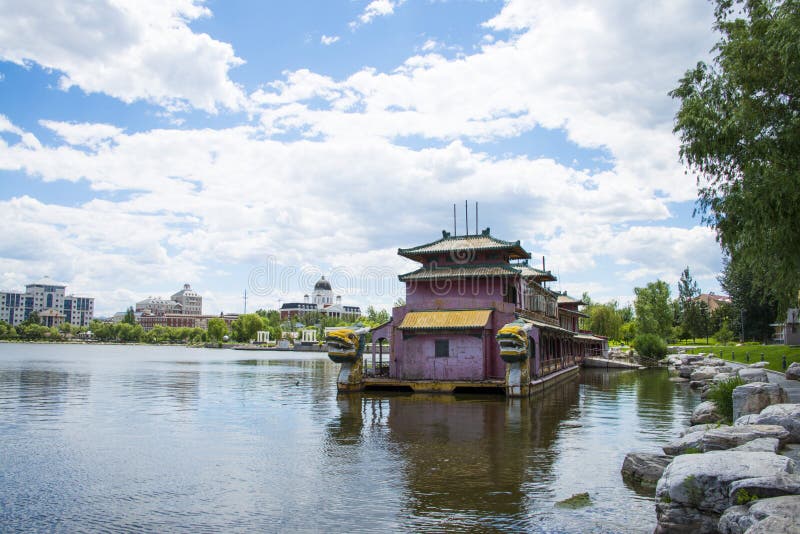
Yanqing Temple.
Admission Fees
- General Admission: 30 RMB
- Discounted Admission: 15 RMB for seniors (60 years and older) and students with valid ID
Getting There
Yanqing Temple is conveniently located approximately a 15-minute walk from the Drum Tower. You can easily follow these directions:
1. Head south from the Drum Tower.
2. At the first major crossroads, turn left.
3. Walk about 400 meters, then turn right.
4. Continue for around 500 meters, and you’ll find the temple on your right.
What to Expect
- Unique Architecture: The temple features an unusual pagoda with a square base and an octagonal tower, showcasing a blend of Mongolian and Chinese architectural styles. This combination is rare and provides excellent photographic opportunities.
- Scenic Grounds: The temple’s grounds are beautifully maintained, making it a pleasant spot for a leisurely stroll. Visitors have noted the area is often uncrowded, allowing for a more intimate experience.
- Historical Insights: Although small, the temple is rich in history, having stood for over 1,500 years. Guided tours are available, and having a knowledgeable guide can significantly enhance your understanding of the temple’s significance and its architectural features.
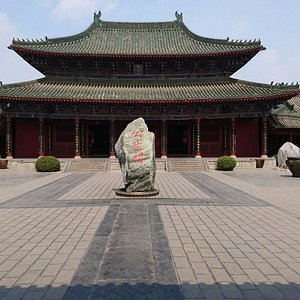
Yanqing Temple.
Photography Tips
- The temple’s unique structure and vibrant details offer fantastic photography potential. Plan to visit early in the morning or late afternoon to capture the best natural lighting.
- Look for the intricate wood carvings and mural paintings, which add character to the temple’s interior.
Nearby Attractions
After visiting Yanqing Temple, consider exploring other significant sites in Kaifeng:
– Dragon Pavilion Park (Long Ting) – A scenic park located just 0.3 miles away.
– Xiangguo Temple – A renowned religious site within close proximity.
– Kaifeng City Wall – Explore the remnants of this historic fortification, only a short walk from the temple.
Dining Options
If you’re feeling peckish after your visit, there are several dining options nearby:
– Di Yi Lou (Sihou Street) – A popular choice for local cuisine, about 0.4 miles from the temple.
– SuShi Beef Noodle – Known for its hearty dishes, located just 0.7 miles away.
Final Thoughts
While Yanqing Temple may not be the largest or most visited temple in Kaifeng, its unique features and serene atmosphere make it a worthy stop on your cultural journey. Allow an hour for your visit to fully appreciate the architecture and tranquility of this historic site. Don’t forget to engage with the friendly locals who are often eager to share insights about this fascinating piece of Chinese history!
Tickets: Prices, Booking, and Tips
Visiting Yanqing Temple (延庆寺) in Kaifeng offers a delightful glimpse into the rich tapestry of Chinese history and Taoist culture. If you’re planning a visit, here’s everything you need to know about tickets, booking, and some handy tips to enhance your experience.
Ticket Information
- Entrance Fee: The cost to enter Yanqing Temple is 30 RMB (approximately $4.50 USD).
- Discounts: Reduced rates are available for seniors aged 60 and above, as well as students with valid identification, who can enjoy entry for just 15 RMB.
Booking Process
- Advance Booking: While tickets can generally be purchased on-site at the temple, it’s advisable to check for any special events or guided tours that might require advance booking.
- Guided Tours: Consider hiring a local guide to enrich your visit. A knowledgeable guide can provide insights into the temple’s history, architecture, and cultural significance, making your experience much more rewarding.
Visiting Hours
Yanqing Temple is open daily from 8:00 AM to 6:30 PM. To avoid crowds and fully appreciate the tranquility of the temple grounds, consider visiting in the early morning or during weekdays.
Tips for Your Visit
-
Photography: The temple features a uniquely shaped octagonal tower with a square base, providing excellent photo opportunities. Early morning light is perfect for capturing the vibrant colors and intricate details of the temple’s architecture.
-
Duration: Plan for about 30 to 60 minutes to explore the temple. While it’s not extensive, the unique design and serene atmosphere make it a lovely spot to wander.
-
Nearby Attractions: After visiting the temple, take advantage of its proximity to other historical sites in Kaifeng. Notable nearby attractions include the Dragon Pavilion Park and the Kaifeng House Scenic Resort, both within walking distance.
-
Local Cuisine: Don’t miss the chance to sample local delicacies at nearby restaurants. Many establishments within a short distance offer authentic Kaifeng cuisine that will round out your cultural experience.
-
Language: If you are not fluent in Chinese, consider bringing a translation app or phrasebook. While some staff may speak English, having a few phrases handy can enhance communication.
Visiting Yanqing Temple is not just about seeing a historical site; it’s about immersing yourself in the essence of Taoist philosophy and enjoying the serene beauty of Chinese heritage. With the right preparation, your visit will undoubtedly be memorable.
How to Get There: A Complete Transportation Guide
Getting to Yanqing Temple: A Comprehensive Transportation Guide
Navigating your way to Yanqing Temple (延庆寺) in Kaifeng, China, offers a delightful journey through one of the country’s rich historical landscapes. Whether you are coming from within the city or arriving from farther afield, this guide will ensure you have everything you need for a smooth visit.
Arriving by Air
Nearest Airport:
– Kaifeng Airport: While Kaifeng does not have a major airport, the nearest airport is Zhengzhou Xinzheng International Airport (CGO), located approximately 70 kilometers (about 43 miles) from Kaifeng.
Transportation from the Airport:
1. Taxi: The most convenient option. Taxis are readily available at the airport, and the ride to Kaifeng takes about 1.5 hours.
2. Airport Shuttle: Check for shuttle services that may take you to Kaifeng city center. This option is usually more economical than a taxi.
3. Train: Take a taxi to the Zhengzhou Railway Station, then board a train to Kaifeng. The train journey takes approximately 30 minutes.
By Train
Kaifeng Railway Station:
Kaifeng is well-connected to major cities via the high-speed rail network, making it accessible from cities like Beijing, Shanghai, and Zhengzhou.
- From Zhengzhou: High-speed trains run frequently to Kaifeng, taking around 30 minutes.
- From Beijing: Expect a journey of approximately 2.5 to 3 hours, depending on the train service.
Getting to Yanqing Temple from the Railway Station:
– Taxi: The temple is about a 15-20 minute taxi ride from the station. Taxis are available outside the station.
– Public Bus: Take Bus Line 12 or 20. Ensure you check local schedules and stops, as they may vary.
Local Transportation Options
Public Transit:
– Buses: Multiple bus routes serve the area around Yanqing Temple. Buses are an economical option, but make sure to have the name of the temple written in Chinese (延庆寺) for ease of communication.
– Bicycles: Renting a bike is a popular way to explore Kaifeng. Many local shops offer rentals, and cycling to the temple can be a scenic experience.
Walking Directions:
If you are near the Drum Tower, it’s about a 15-minute walk to Yanqing Temple. Here’s a simple route:
1. Head south from the Drum Tower.
2. At the first major intersection, turn left.
3. Walk approximately 400 meters, then turn right at the next intersection.
4. Continue for about 500 meters; the temple will be on your right.
Tips for Your Visit
- Entry Fees: Expect a modest entry fee of around 30 RMB. Discounts are available for seniors and students with valid IDs.
- Best Time to Visit: The temple is generally less crowded on weekday mornings, making it an ideal time for photography and exploration.
- Guided Tours: Consider hiring a local guide who can provide insightful historical context about the temple’s unique architecture and cultural significance.
Nearby Attractions
Once you’ve explored Yanqing Temple, there are several nearby attractions worth visiting:
– Dragon Pavilion Park: Just a 10-minute walk from the temple.
– Xiangguo Temple: A historical site around a 15-minute walk away.
– Kaifeng House Scenic Resort: Located by the East Baogong Lake, perfect for a leisurely stroll.
With this guide in hand, you are ready to embark on your journey to Yanqing Temple and immerse yourself in the rich tapestry of Kaifeng’s cultural heritage. Enjoy your visit!
Local Cuisine and Accommodation Nearby
Culinary Delights and Comfortable Stays Near Yanqing Temple
Visiting Yanqing Temple in Kaifeng offers a wonderful opportunity to indulge in local cuisine and enjoy comfortable accommodations that reflect the rich history and culture of the area. Here’s a curated list of dining options and nearby hotels that ensure a delightful stay.
Local Cuisine
- Di Yi Lou (第一楼)
- Rating: 4.1/5
- Distance: 0.4 miles
- Cuisine: Traditional Chinese
-
Description: Known for its authentic local dishes, Di Yi Lou offers a cozy atmosphere perfect for savoring local delicacies. Their menu features a variety of dishes, with a particular emphasis on hearty noodles and flavorful stir-fries.
-
ZhenLu KaoRou (真鹿烤肉)
- Rating: 4.5/5
- Distance: 0.6 miles
- Cuisine: Grilled Meats
-
Description: A must-visit for meat lovers, this restaurant specializes in grilled dishes, particularly skewered meats that are marinated to perfection. The lively ambiance complements the delicious food, making it a favorite among locals and visitors alike.
-
SuShi Beef Noddle (苏式牛肉面)
- Rating: 4.0/5
- Distance: 0.7 miles
- Cuisine: Noodles
-
Description: Indulge in their signature beef noodle soup, renowned for its rich broth and tender beef. This establishment is perfect for a quick and satisfying meal after exploring the temple.
-
HuTian Wu (胡天屋)
- Rating: 4.0/5
- Distance: 0.9 miles
- Cuisine: Japanese
-
Description: If you’re in the mood for something different, this Japanese restaurant offers a variety of sushi and traditional dishes. It’s a great place to unwind while enjoying a blend of Asian flavors.
-
QingLian Restaurant (青莲餐厅)
- Rating: 4.7/5
- Distance: 1.7 miles
- Cuisine: Fusion
- Description: For a unique culinary experience, QingLian combines local flavors with international cuisine. The restaurant’s modern decor and innovative dishes make it a popular choice for food enthusiasts.
Accommodation Options
- Kaifeng Jinling Hotel (开封金陵大酒店)
- Rating: 4.0/5
- Distance: 1.2 miles
-
Description: This hotel offers a blend of modern comfort and traditional Chinese hospitality. With spacious rooms and excellent amenities, it’s an ideal base for exploring Kaifeng.
-
Hanting Express Kaifeng (汉庭酒店)
- Rating: 3.8/5
- Distance: 0.9 miles
-
Description: A budget-friendly option with clean and comfortable accommodations, Hanting Express is perfect for travelers looking for simplicity without sacrificing quality.
-
Kaifeng International Hotel (开封国际酒店)
- Rating: 4.2/5
- Distance: 1.5 miles
-
Description: With well-appointed rooms and a range of facilities, this hotel provides a comfortable stay with easy access to various attractions, including Yanqing Temple.
-
Xinyuan Hotel (鑫源酒店)
- Rating: 4.0/5
- Distance: 1.0 miles
-
Description: Situated in a prime location, Xinyuan Hotel offers modern amenities and attentive service. Guests can enjoy a variety of dining options within the hotel, making it a convenient choice.
-
Jinjiang Inn Kaifeng (锦江之星开封店)
- Rating: 4.0/5
- Distance: 1.3 miles
- Description: Known for its affordability and cleanliness, Jinjiang Inn provides a comfortable stay for travelers on a budget. Its central location makes it easy to explore the historical sites in Kaifeng.
Whether you’re in the mood for traditional Chinese flavors or looking to unwind in comfort, the area surrounding Yanqing Temple has something to offer every traveler. Enjoy your culinary and cultural journey in this historic city!
Frequently Asked Questions
Frequently Asked Questions about Yanqing Temple (延庆寺)
1. Where is Yanqing Temple located?
Yanqing Temple is situated at No. 53 Guanqian Street, Longting District, Kaifeng, Henan Province, China. It is easily accessible from many popular attractions in the area.
2. What are the opening hours for Yanqing Temple?
The temple is open daily from 8:00 AM to 6:30 PM. It’s advisable to visit during the morning for a quieter experience and to fully appreciate the serene atmosphere.
3. Is there an entrance fee?
Yes, the entrance fee to Yanqing Temple is 30 RMB. There is a discounted rate available for seniors (60 years and older) and students with valid ID, who can enter for half price.
4. How long should I plan to spend at Yanqing Temple?
Most visitors find that spending about 30 minutes to an hour is sufficient to explore the temple, its unique architecture, and the surrounding grounds. If you have a guide, you may want to extend your visit to fully appreciate the history and cultural significance.
5. What makes Yanqing Temple unique?
Yanqing Temple is renowned for its distinct octagonal tower built on a square base, showcasing a combination of Mongolian and Chinese architectural styles. The vibrant colors and intricate carvings, along with the serene gardens, provide excellent photography opportunities.
6. Are there any guided tours available?
While there are no official guided tours, local guides are often available near the temple. Hiring a guide can enrich your visit as they can provide detailed insights into the temple’s history and significance.
7. What nearby attractions should I consider visiting?
After visiting Yanqing Temple, consider exploring nearby attractions such as Dragon Pavilion Park, Millennium City Park, and Xiangguo Temple, all of which are within a short walking distance and offer a glimpse into Kaifeng’s rich history.
8. Can I access the tower inside the temple?
Unfortunately, visitors are not allowed to ascend the tower. However, you can explore the cellar area beneath it, where you can learn about the temple’s architectural history through informative displays.
Final Thoughts on Your Trip
Reflecting on Your Visit to Yanqing Temple
As your journey through the rich tapestry of Chinese history and culture comes to a close, a visit to Yanqing Temple in Kaifeng offers a serene conclusion that resonates deeply with the essence of Taoism. This temple, though compact, is a treasure trove of architectural uniqueness and spiritual significance, inviting travelers to pause and reflect.
Why Yanqing Temple is Worth Your Time:
-
Architectural Marvel: The temple’s strikingly unusual pagoda, with its square base and octagonal pavilion, stands as a testament to the fusion of Mongolian and Chinese design, making it a photographer’s delight and a historical curiosity.
-
Cultural Immersion: Wandering through the beautifully landscaped grounds allows you to immerse yourself in the tranquility that permeates the air. The absence of large crowds, especially during weekday visits, enhances this experience, making it an ideal spot for contemplation.
-
Engaging Guides: Consider hiring a local guide to enrich your understanding of the temple’s history and significance. Their insights can reveal layers of meaning behind the intricate carvings and murals, offering a more profound connection to this sacred space.
-
Accessibility: Located conveniently near other attractions in Kaifeng, Yanqing Temple presents an easy stop during your exploration of the city’s historical sites. With a modest entry fee, it’s a delightful addition to your itinerary.
Final Thoughts:
Yanqing Temple is not merely a stop on your travel map; it serves as a gateway to appreciating the depth of Chinese spirituality and artistry. Whether you’re an avid historian, a photography enthusiast, or simply seeking a moment of peace, this temple encapsulates the beauty of Taoist philosophy and the enduring legacy of Chinese culture. As you leave, carry with you the tranquil energy of the temple and the stories it holds, enriching your overall travel experience in China. Safe travels!